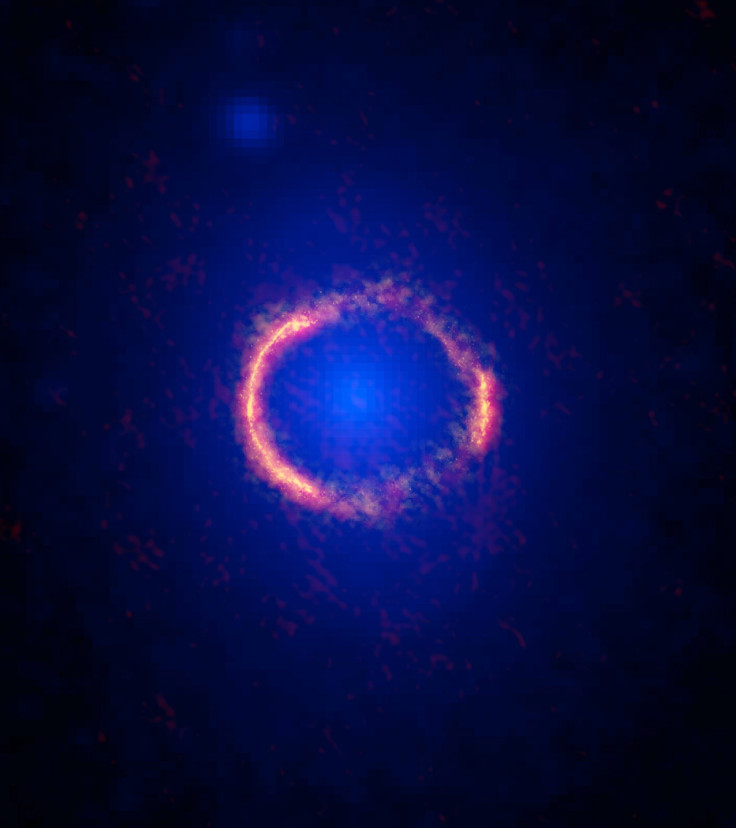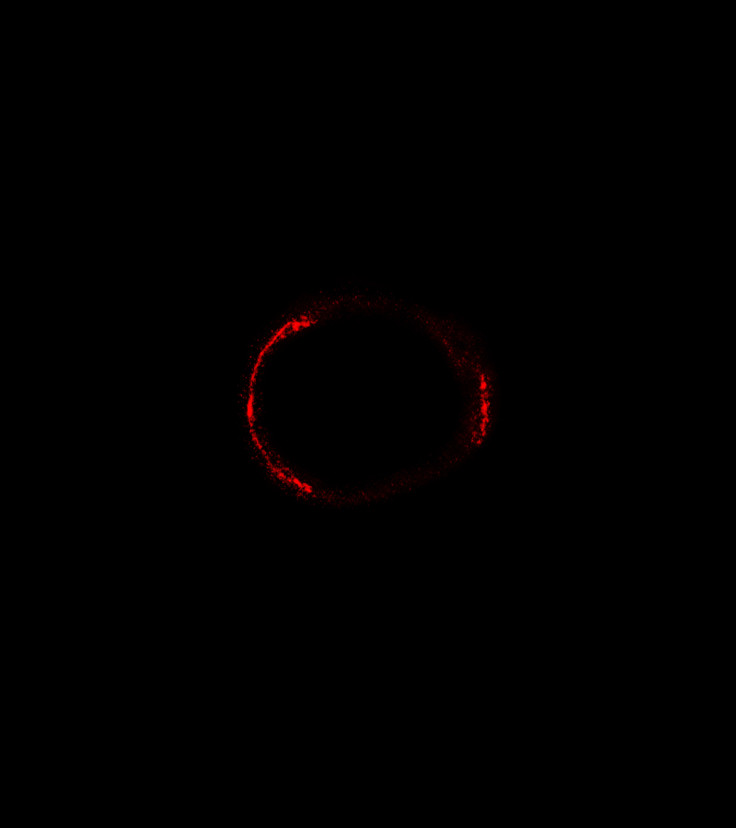Gravitational lensing delivers stunning cosmic ring image of distant galaxy

A ground-based telescope array has captured a cosmic ring formed by the bending of light in the presence of a strong gravitational pull.
The high resolution images taken with the Atacama Large Millimeter/Submillimeter Array (Alma) show a ring-like structure formed by a chance alignment of galaxies where the light of the distant galaxy SDP.81 was bent by an intervening one.
This is a result of gravitational lensing predicted by Albert Einstein in his theory of general relativity when a massive galaxy or cluster of galaxies bends the light emitted from a more distant galaxy, to form a highly magnified, but distorted image.
In this particular case, the galaxy line up was so perfect that the light formed a nearly complete circle as seen from Earth.
Alma achieved a maximum resolution of 23 milliarcseconds, which is likened to seeing the rim of a basketball hoop atop the Eiffel Tower from the observing deck of the Empire State Building.
Discovered by the Herschel Space Observatory, SDP.81 is an active star-forming galaxy nearly 12 billion light-years away, showing a time when the universe was only 15% of its current age.
The massive foreground galaxy is a younger one at four billion light-years away.
"Gravitational lensing is used in astronomy to study the very distant, very early Universe because it gives even our best telescopes an impressive boost in power," said ALMA Deputy Program Scientist Catherine Vlahakis.
"With the astounding level of detail in these new ALMA images, astronomers will now be able to reassemble the information contained in the distorted image we see as a ring and produce a reconstruction of the true image of the distant galaxy."
The new SDP.81 images were taken in October 2014.

The highest resolution image of SDP.81 was made by observing the relatively bright light emitted by cosmic dust from the distant galaxy.
This striking image reveals well-defined arcs in a pattern hinting at a more complete, nearly contiguous ring structure.
Other slightly lower-resolution images, made by observing the faint molecular signatures of carbon monoxide and water, completed the picture and provide important details about this distant galaxy.
The galaxy SDP.81 has been studied previously by other observatories, including radio observations and visible light observations with the Hubble Space Telescope, but the Alma images are said to be the first showing the remarkable ring structure.
"The exquisite amount of information contained in the ALMA images is incredibly important for our understanding of galaxies in the early Universe," said astronomer Jacqueline Hodge with the National Radio Astronomy Observatory in Charlottesville, Virginia.
Using computer programs the astronomers will now attempt to reconstruct the galaxy's true appearance and arrive at the actual shape and internal motion of the distant, and ancient galaxy.
The first gravitational lens was discovered in 1979. Lensing provides a window into the extremely faint universe just after its birth 13.8 billion years ago.
When the path of the light is far from the mass, or if the mass is not especially large, "weak lensing" will occur, and the background object is not much distorted.
When the background object is almost exactly behind the mass, however, "strong lensing" can smear huge objects into an "Einstein ring" surrounding the lensing galaxy or cluster.
© Copyright IBTimes 2025. All rights reserved.




















